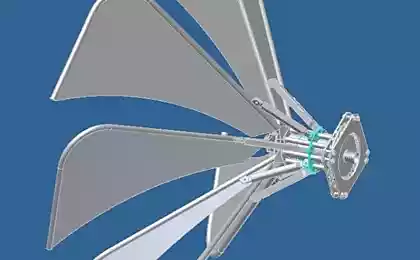520
In Europe wind power cheaper than nuclear
Wind power has officially overtaken nuclear power as the most available energy — at least in countries surrounding the North sea.

In the European region, cost of wind energy now 30 percent lower than nuclear, a promising development has provided the impetus for renewable energy around the world.
At the current rate of placement of wind power plants, as predicted by industrial group WindEurope, the wind will provide 7 percent of energy demand in Europe by 2030.

Such a drop in prices largely due to the fact that marine wind farms are becoming cheaper and simpler in construction.
In the past, the construction of such power plants was quite expensive and impractical — and given the relatively low cost of fossil fuel, many companies just did not make sense to invest such funds in projects.
However, the closure of many drilling projects in the North sea left marine construction equipment without a sufficient amount of work, resulting in rates for transportation of turbines in the sea began to fall sharply. Other factors that helped to reduce the price include the low level of prices for oil and steel, reduced maintenance requirements, and ability to mass produce turbines.

The capacity of the Dogger Bank project will amount to 1.2 GW — enough to provide more than a million homes. Next year will start its work on the 150-turbine wind farm off the coast of the Netherlands and a few other projects along the Dutch coast are in the works.
The main investors in the development of offshore wind energy are Denmark, Sweden and Portugal, in addition, China has ambitious plans for this sector. Wind farms — both on land and at sea — are a key element in the policy of renewable energy, as well as an important element in the fight against climate change.
At the same time as lowering the cost of wind power represents just a small part of the global energy market, there are no reasons why other regions can't create the same potential.
China, for example, built a lot of solar and wind facilities, with which it is likely to exceed its own goals for reducing emissions by 2020. And here in the US wind power is currently growing at a slower rate that may not be for long — the new turbine design could potentially overturn on the head of the entire fuel industry on the American side of the Atlantic. published
Source: facepla.net/the-news/5521-%D0%B5%D0%B2%D1%80%D0%BE%D0%BF%D0%B0-%D0%B2%D0%B5%D1%82%D1%80%D0%BE%D1%8D%D0%BD%D0%B5%D1%80%D0%B3%D0%B5%D1%82%D0%B8%D0%BA%D0%B0.html

In the European region, cost of wind energy now 30 percent lower than nuclear, a promising development has provided the impetus for renewable energy around the world.
At the current rate of placement of wind power plants, as predicted by industrial group WindEurope, the wind will provide 7 percent of energy demand in Europe by 2030.

Such a drop in prices largely due to the fact that marine wind farms are becoming cheaper and simpler in construction.
In the past, the construction of such power plants was quite expensive and impractical — and given the relatively low cost of fossil fuel, many companies just did not make sense to invest such funds in projects.
However, the closure of many drilling projects in the North sea left marine construction equipment without a sufficient amount of work, resulting in rates for transportation of turbines in the sea began to fall sharply. Other factors that helped to reduce the price include the low level of prices for oil and steel, reduced maintenance requirements, and ability to mass produce turbines.

The capacity of the Dogger Bank project will amount to 1.2 GW — enough to provide more than a million homes. Next year will start its work on the 150-turbine wind farm off the coast of the Netherlands and a few other projects along the Dutch coast are in the works.
The main investors in the development of offshore wind energy are Denmark, Sweden and Portugal, in addition, China has ambitious plans for this sector. Wind farms — both on land and at sea — are a key element in the policy of renewable energy, as well as an important element in the fight against climate change.
At the same time as lowering the cost of wind power represents just a small part of the global energy market, there are no reasons why other regions can't create the same potential.
China, for example, built a lot of solar and wind facilities, with which it is likely to exceed its own goals for reducing emissions by 2020. And here in the US wind power is currently growing at a slower rate that may not be for long — the new turbine design could potentially overturn on the head of the entire fuel industry on the American side of the Atlantic. published
Source: facepla.net/the-news/5521-%D0%B5%D0%B2%D1%80%D0%BE%D0%BF%D0%B0-%D0%B2%D0%B5%D1%82%D1%80%D0%BE%D1%8D%D0%BD%D0%B5%D1%80%D0%B3%D0%B5%D1%82%D0%B8%D0%BA%D0%B0.html























